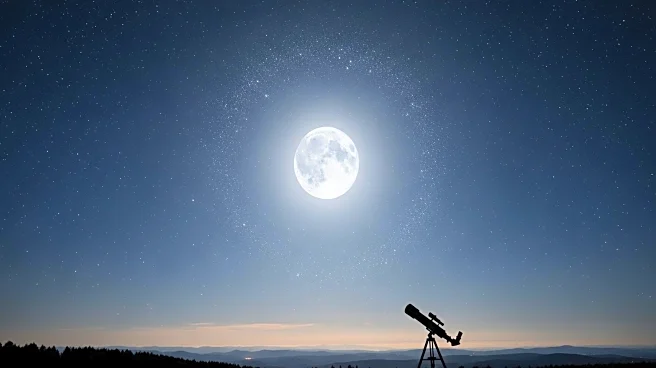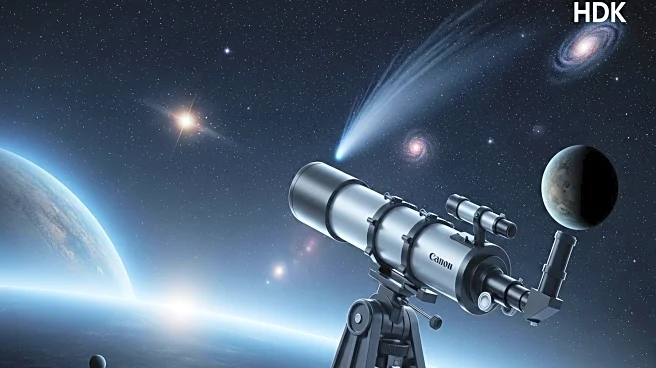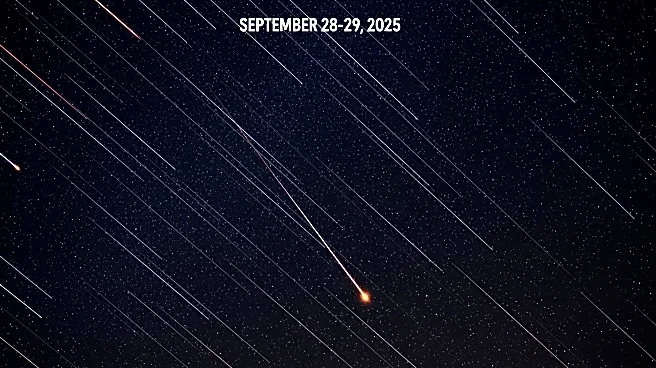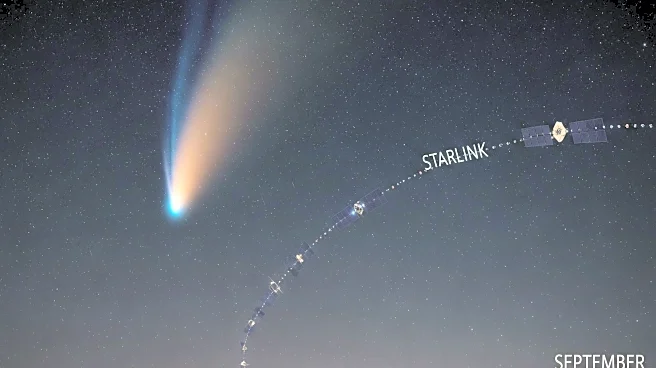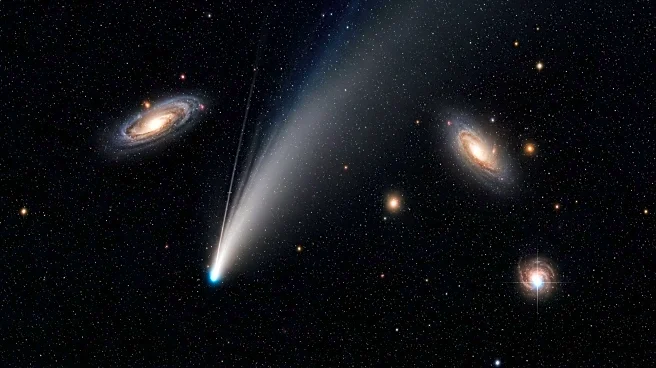What's Happening?
In October 2025, Saturn takes center stage in the night sky, offering a spectacular view for astronomy enthusiasts. Despite reaching opposition in late September, Saturn remains highly visible, situated in the northeastern corner of Aquarius. The planet's rings appear nearly edge-on, reducing glare and allowing observers to spot Saturn's moons more easily. Throughout the month, Mercury and Mars will be visible in the western evening sky, with a notable conjunction occurring on October 21. Mercury reaches its greatest elongation on October 29, providing a prime viewing opportunity. Jupiter and Venus also make appearances, with Jupiter visible after midnight and Venus shining brightly during morning twilight. The month also features a lunar occultation of Antares in Scorpius, visible from southern South America.
Why It's Important?
The visibility of Saturn and other planets in October 2025 offers significant opportunities for both amateur and professional astronomers to observe and study these celestial bodies. Saturn's reduced ring glare allows for better observation of its atmospheric details and moons, enhancing scientific understanding. The conjunction of Mercury and Mars provides a rare chance to witness planetary alignments, which can be crucial for educational purposes and public interest in astronomy. The lunar occultation of Antares adds another layer of interest, showcasing the dynamic interactions between celestial objects. These events can stimulate interest in astronomy, potentially leading to increased public engagement and support for space exploration initiatives.
What's Next?
As October progresses, astronomers and enthusiasts will continue to monitor the movements and visibility of these planets. The conjunction of Mercury and Mars on October 21 will be a focal point for observation, with potential implications for future studies on planetary motion and alignment. The visibility of Jupiter and Venus will also be tracked, providing ongoing opportunities for observation and research. The lunar occultation of Antares on October 25 will be closely watched by those in southern South America, offering insights into lunar and stellar interactions. These events may lead to increased public interest in astronomy and potential advancements in observational techniques.
Beyond the Headlines
The celestial events of October 2025 highlight the intricate and dynamic nature of our solar system, offering a reminder of the vastness and complexity of space. Observing these phenomena can inspire curiosity and wonder, encouraging individuals to explore the universe beyond our planet. The visibility of multiple planets and the lunar occultation serve as a testament to the interconnectedness of celestial bodies, prompting discussions on the broader implications of planetary motion and alignment. These events may also influence cultural and artistic expressions, as the beauty and mystery of the night sky continue to captivate human imagination.

